
Amber Beads
5th – 8th Century AD
Amber
Necklace of 12 amber beads, of various shapes and sizes. Amber was likely imported from the Baltic, and would have been expensive to purchase; these beads would have belonged to someone very wealthy.
Found at Eastry, Kent, by Mr. Irby. Presented to the museum by Dr. W.G. Urry
Reference: CANCM:7509
Can be found: The Anglo-Saxon Kingdom of Kent

















Beads
5th – 8th Century AD
Glass and stone
Necklace containing four cylindrical (bugle) beads and what were originally quadruple pearl-like beads, some of which have since separated into single, double and triple beads.
Found at Eastry, Kent by Mr. Irby. Presented to the museum by Dr. W.G. Urry
Reference: CANCM:7511
Can be found: The Anglo-Saxon Kingdom of Kent

















Bird Brooch
5th-8th Century AD
Gilded Copper Alloy
Bird shaped brooch of a Frankish type, with traces of gilt on the exterior.
Found at Eastry, Kent in 1792. Presented to the museum by Dr. W.G. Urry after a loan from Mr Irby
Reference: CANCM:7496.
Can be found: The Anglo-Saxon Kingdom of Kent

















Bronze Patera Bowl
7th Century AD
Copper Alloy
‘Coptic bowl’. Bowls of this type have been found in several other Anglo-Saxon cemetaries in Kent. They were made in Egypt, and probably were imported from Alexandria in the seventh century AD, arriving to Britain via the river Rhine.
Thought to be from Wickhambreaux (1886).
Bequeathed by Lt. Col Copeland.
Reference: CANCM:1107
Can be found: The Anglo-Saxon Kingdom of Kent

















Brooch
5th – 8th Century AD
Silver Gilt
Silver-gilt brooch with garnet and greenstone.
Found at Eastry, Kent in 1792. Presented to the museum by Dr. W.G. Urry after a loan from Mr Irby
Reference: CANCM:7497
Can be found: The Anglo-Saxon Kingdom of Kent

















Brooch
5th – 8th Century AD
Copper-Alloy
Square brooch set with garnets at each corner.
Found at Mersham, Kent in 1828.
Reference: CANCM:2631
Can be found: The Anglo-Saxon Kingdom of Kent

















Brooch
5th – 8th Century AD
Copper-Alloy
Jeweled brooch of Jutish type, set with garnets.
Found at Mersham, Kent in 1828.
Reference: CANCM:nn
Can be found: The Anglo-Saxon Kingdom of Kent

















Brooch
5th – 8th Century AD
Copper-Alloy
Circular brooch set with garnets, one is missing.
Found at Merhsam, Kent in 1828
Reference: CANCM:2632
Can be found: The Anglo-Saxon Kingdom of Kent
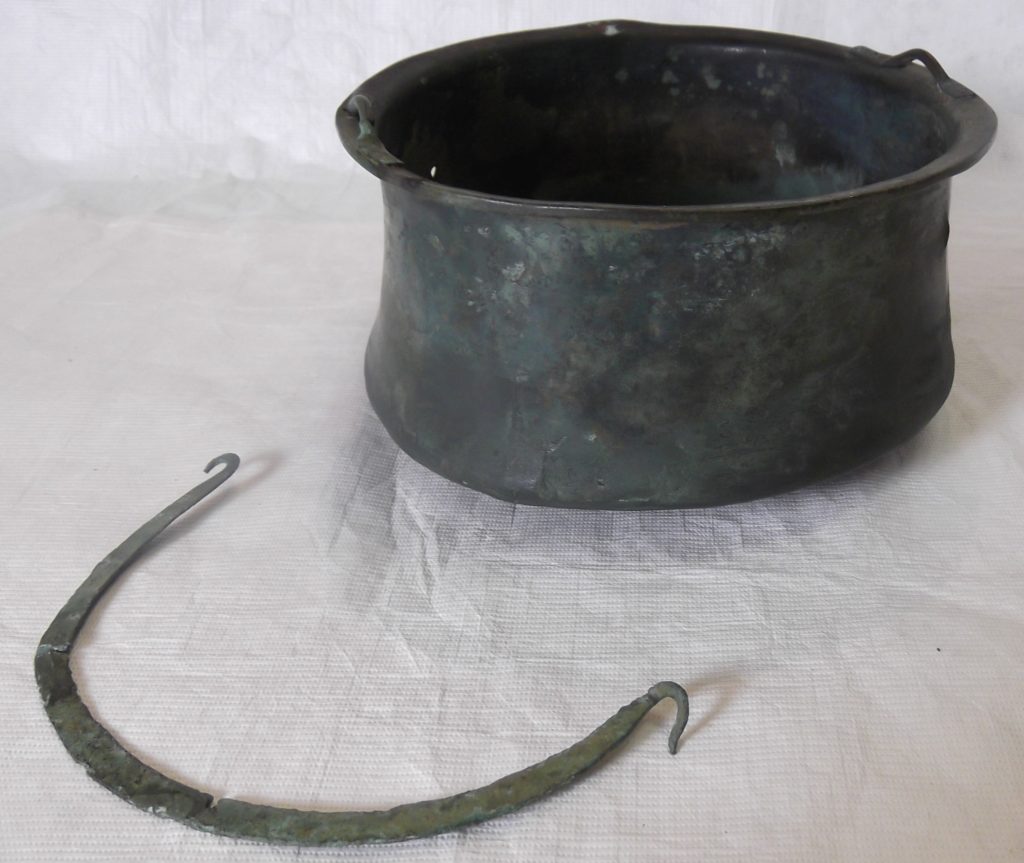

Bucket
5th – 8th Century AD
Copper Alloy
Bucket/vat with handle, fragments inside.
Reference: CANCM:1113
Can be found: The Anglo-Saxon Kingdom of Kent

















Buckle
5th – 8th Century AD
Copper Alloy
Small bronze buckle complete with tongue. The buckle loop is decorated with groups of incised lines and part of the buckle plate remains.
Found at Eastry, Kent in 1792. Presented to the museum by Dr. W.G. Urry after a loan from Mr Irby
Reference: CANCM:7501
Can be found: The Anglo-Saxon Kingdom of Kent

















Coin
Eighth Century AD
Silver
Electroform copy of an Anglo-Saxon coin - the original is in the British Museum. This coin was minted in around 765AD for Ecgberht II, who ruled from 765 to 779. Not much is known about Ecgberht aside from his coins and the small number of charters in which he is mentioned; he was likely installed by Offa as a king. Offa then attempted to rule Kent more directly in 776, which prompted a rebellion under Ecgberht. Kent seems to have remained independent for several years afterwards, which suggests it was successful.
Reference: CANCM:10446
Can be found: The Anglo-Saxon Kingdom of Kent


Coin
Silver
Coin minted for Archbishop Æthelheard, who was enthroned in 793. It bears the names of both the archbishop and the King. King Offa gave the Archbishops of Canterbury the right to mint their own coins, and this continued into the reign of King henry VIII.
Found by Mr David Hunt at Otford, Kent. Acquired by the Landowner with grant-aid from the MLA/V&A Purchase Grant fund, and generous contributions from Mr Hunt and from a Kent charitable trust through the friends of Canterbury Museums.
Reference: CANCM:2010.69
Can be found: The Anglo-Saxon Kingdom of Kent
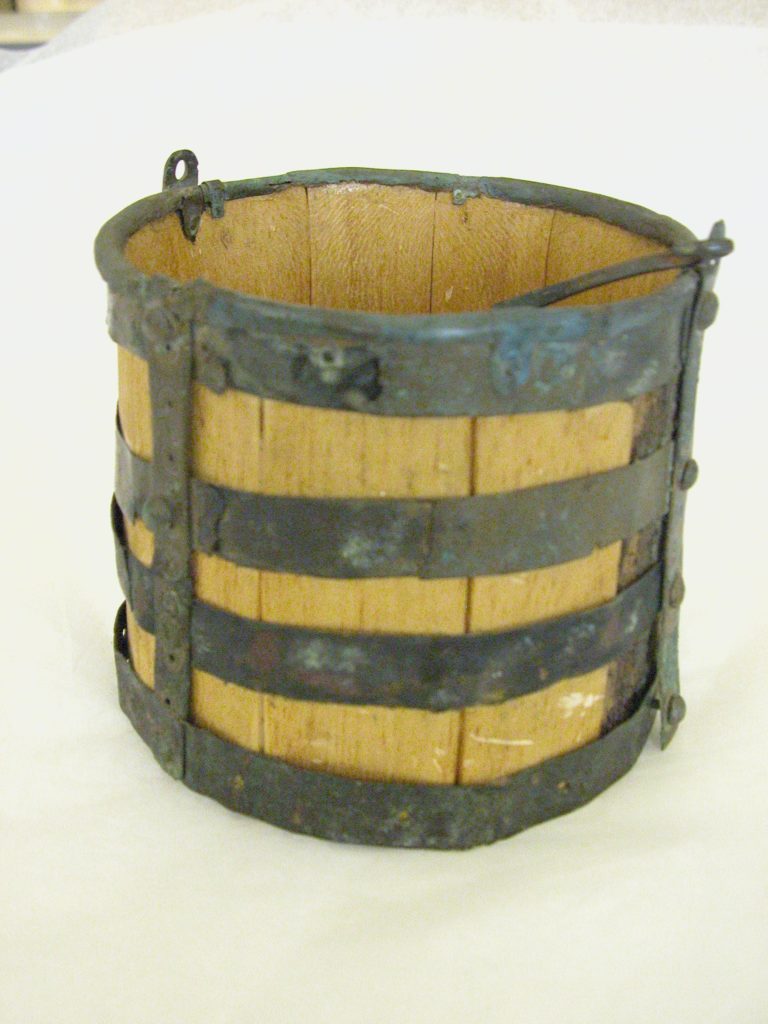

Copper Alloy Bindings from a bucket
5th – 8th Century AD
Copper Alloy
Bronze bindings and handle of an Anglo-Saxon bucket mounted on a modern wooden copy by the London Institute of Archaeology.
Reference: CANCM:8529
Can be found: The Anglo-Saxon Kingdom of Kent
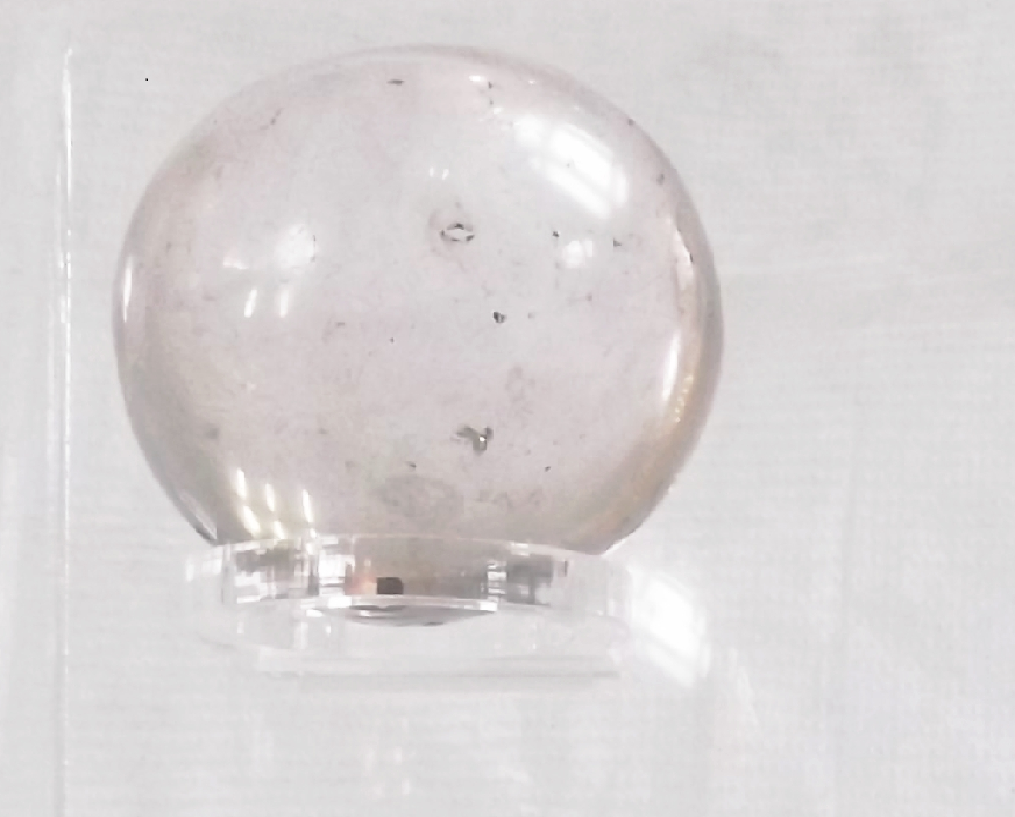


Crystal Sphere
5th – 8th Century AD
Crystal
Large crystal ball without the suspender. The purpose of Anglo Saxon crystal balls is unclear: they may have been used as a magnifying glass, or perhaps even had a magical or ritual use. They are often found in the graves of women next to silver spoons.
Reference: CANCM:2616
Can be found: The Anglo-Saxon Kingdom of Kent



Crystal Sphere
5th – 8th Century AD
Crystal
Large crystal ball without the suspender. The purpose of Anglo Saxon crystal balls is unclear: they may have been used as a magnifying glass, or perhaps even had a magical or ritual use. They are often found in the graves of women next to silver spoons.
Found at Mersham, Kent in 1828.
Reference: CANCM:2616
Can be found: The Anglo-Saxon Kingdom of Kent
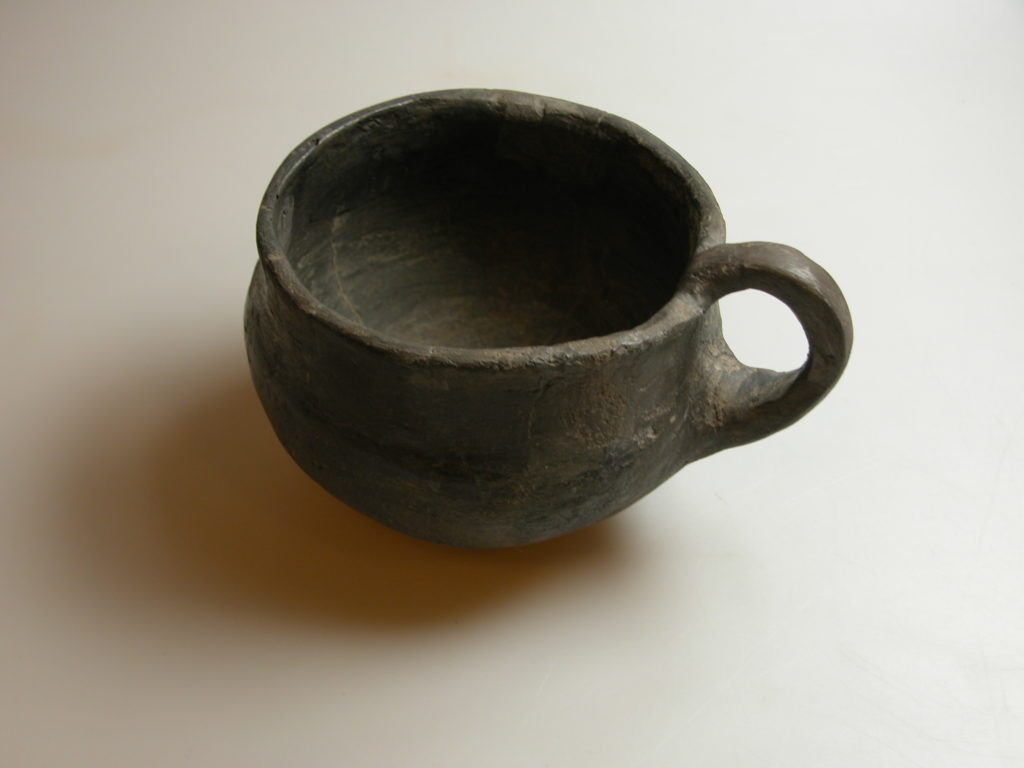

Cup
Fifth to 6th Century AD
Ceramic
Ceramic mug in a brownish ware. This cup was handmade, and would have been burnished (rubbed at speed with a leather cloth) to made it more watertight.
Found in the Marlowe Car Park, 1982. Presented by Canterbury Archaeological Trust.
Reference: CANCM:nn
Can be found: The Anglo-Saxon Kingdom of Kent
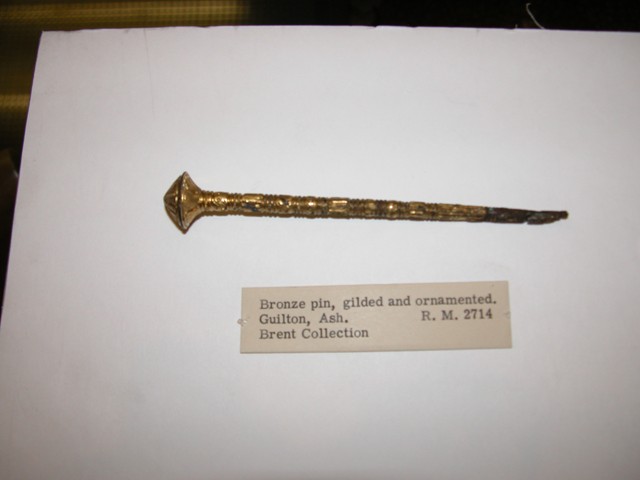


Gilt Pin1
5th – 8th Century AD
Copper Alloy
A highly ornamented, fine gilded, bronze pin.
Found at Guilton, Ash, Kent by Mr. Kingsford. Given to the museum by Mr J. Brent.
Reference: CANCM: 2714
Can be found: The Anglo-Saxon Kingdom of Kent



Gilt Pin1
5th – 8th Century AD
Copper Alloy
A highly ornamented, fine gilded, bronze pin.
Found at Guilton, Ash, Kent by Mr. Kingsford. Given to the museum by Mr J. Brent.
Reference: CANCM: 2714
Can be found: The Anglo-Saxon Kingdom of Kent


Girdle-Hanger
5th – 8th Century AD
Copper Alloy
Bronze girdle-hanger. This type of object, often found in Anglo Saxon women’s graves, imitates a key. It has been suggested that girdle-hangers symbolise that women controlled access to the home.
Found at Eastry, Kent in 1792. Presented to the museum by Dr. W.G. Urry after a loan from Mr Irby
Reference: CANCM:7500
Can be found: The Anglo-Saxon Kingdom of Kent


Glass jar
5th – 8th Century AD
Glass
Reference: CANCM:nn
Can be found: The Anglo-Saxon Kingdom of Kent

















Mount
5th – 8th Century AD
Copper Alloy
Bronze mount, partly gilded, with an animal design.
Found at Guilton, Kent. 1771
Reference: CANCM:2637
Can be found: The Anglo-Saxon Kingdom of Kent
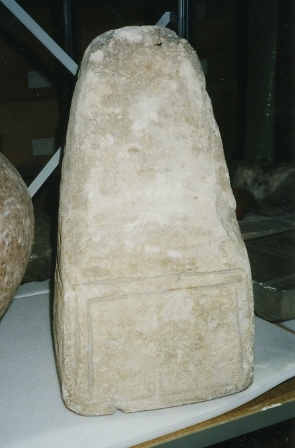

Rune Stone
5th – 6th Century AD
Stone
Rune stone. One of the only two surviving pagan grave markers from the period. (The other is to the left of the case). They may have been made by invading Scandinavian warriors to commemorate comrades who fell in battle.
Found in Sandwich, Kent, UK. by Mr. W.H. Rolfe.
Reference: CANCM:1141
Can be found: The Anglo-Saxon Kingdom of Kent

















Silver Ring
5th – 8th Century AD
Silver
Portion of silver twisted ring.
Found by Mr J. Brent.
Reference: CANCM:2229
Can be found: The Anglo-Saxon Kingdom of Kent
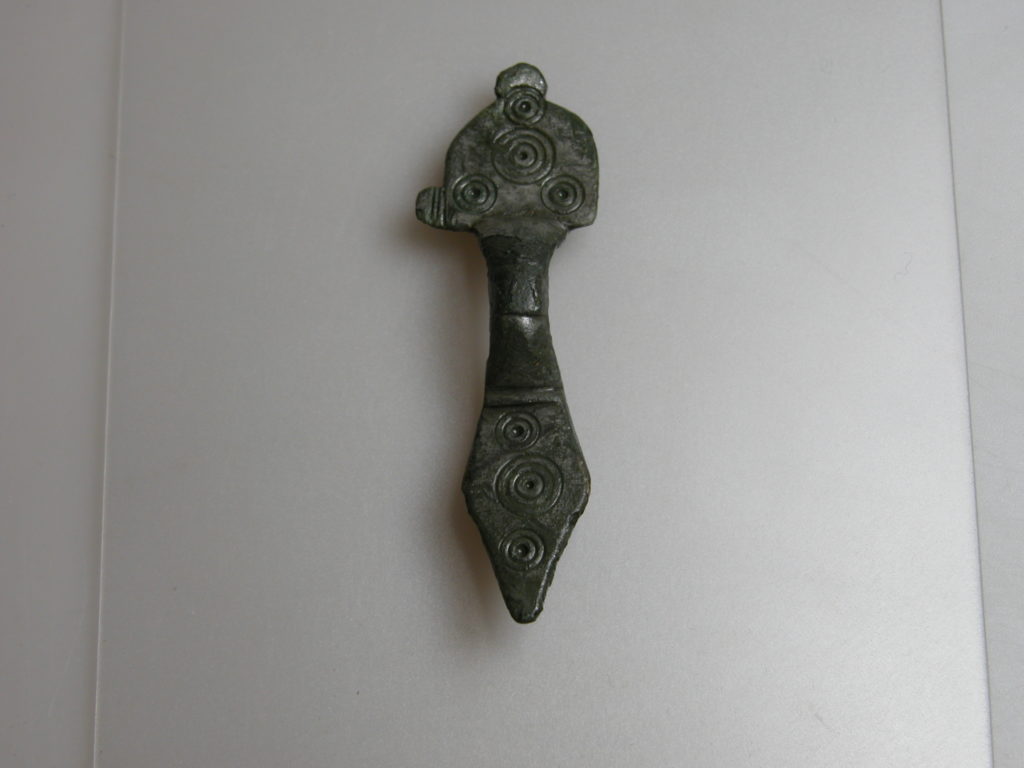

Small-Long Type Brooch
5th-6th Century AD
Copper Alloy
Copper alloy brooch with cup and dot decoration at head and foot. This type of brooch was generally worn in a pair.
Reference: CANCM:nn
Can be found: The Anglo-Saxon Kingdom of Kent
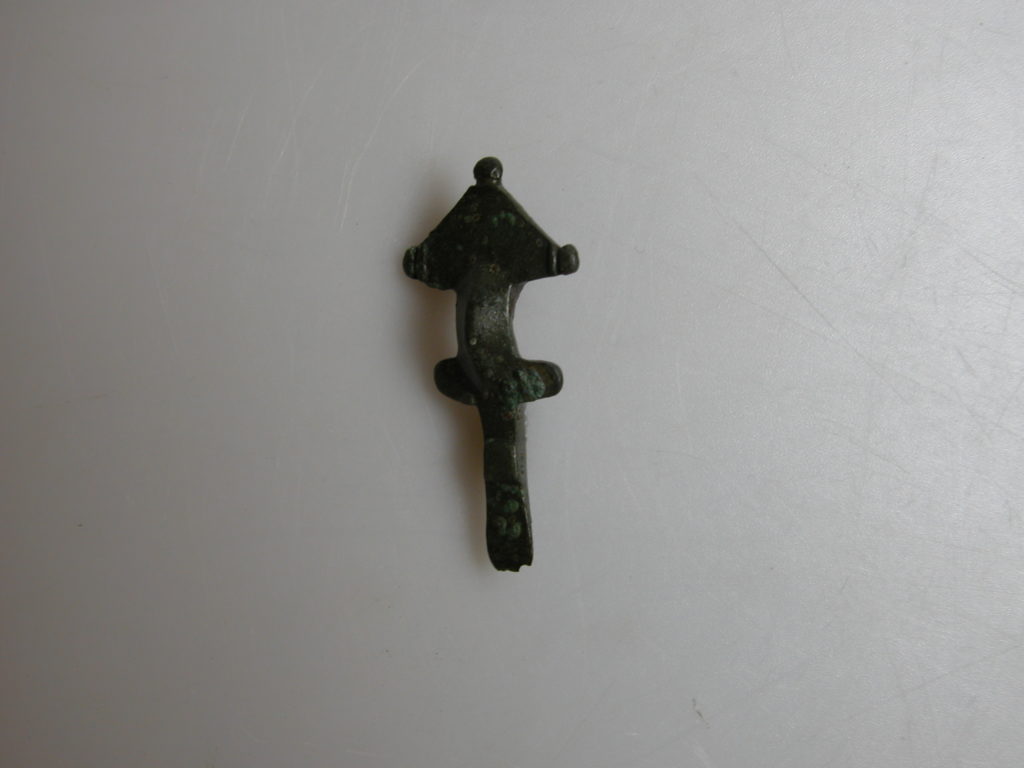

Small-Long Type Brooch
5th-6th Century AD
Copper Alloy
Copper alloy brooch. This type of brooch was generally worn in a pair.
Reference: CANCM:nn
Can be found: The Anglo-Saxon Kingdom of Kent


Spindle Whorl
5th – 8th Century AD
Glass
Spindle whorl of very dark blue or green glass with inlaid white glass decoration. Anglo-Saxon Eastry appears to have been a place of some size and much importance. The Kings of Kent had a palace, and often held court there.
Found at Eastry, Kent by Mr. Irby. Presented to the museum by Dr.W.G. Urry.
Reference: CANCM:7503
Can be found: The Anglo-Saxon Kingdom of Kent

















Square-Headed Brooch
Silver
Square-headed silver-gilt brooch.
Found at Eastry, Kent in 1792. Presented to the museum by Dr. W.G. Urry after a loan from Mr Irby
Reference: CANCM:7495
Can be found: The Anglo-Saxon Kingdom of Kent

















Square-Headed Brooch
5th – 8th Century AD
Silver Gilt
Square-headed silver-gilt brooch with an undivided foot and a motif decorating footplate which shows rampant animals either side of the foot reaching up to the bow.
Found at Eastry, Kent in 1792. Presented to the museum by Dr. W.G. Urry after a loan from Mr Irby
Reference: CANCM:7494
Can be found: The Anglo-Saxon Kingdom of Kent

















The Bishop Liudhard Medalet
c. 590 AD
Gold
A electroform copy of the Bishop Liudhard Medalet, now in the World Museum Liverpool. The Medalet honours Queen Bertha’s chaplain and was probably created prior to St Augustine’s arrival in 597 AD.
Original excavated from St Martin’s Churchyard in 1844.
Reference: CANCM:10353
Can be found: The Anglo-Saxon Kingdom of Kent

















The Dragon Pendant
9th Century AD
Gold, Garnets
An animal-head pendant. It is made from a sheet of gold decorated with gold filigree and granules. One of the eye sockets is now empty, but the other has a deeply sunken garnet set in it. The decoration and style are similar to other pendants that date from the Ninth century, but the suspension loop at the back of the head is unique among Anglo Saxon finds.
Purchased with grant-aid from Arts Council England/Victoria and Albert Museum Purchase Grant Fund and the Headley Trust
Found by Mr Peter Thomas when metal detecting at Monkton, Kent in 2013.
Reference: CANCM:2016.14
Can be found: The Anglo-Saxon Kingdom of Kent
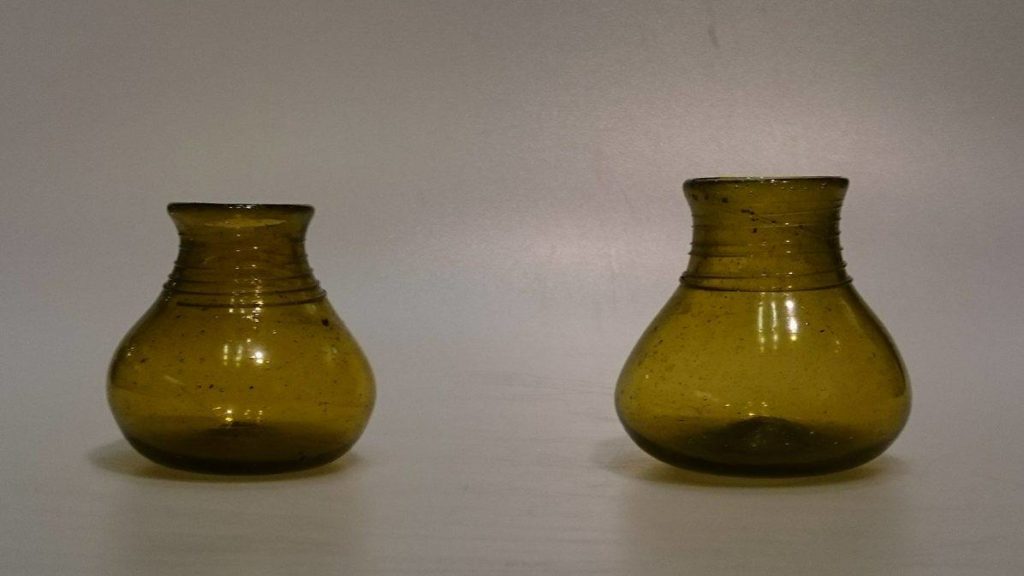

Two Glass Beakers
5th – 8th Century AD
Glass
Two glass beakers of yellow-green glass.
Donated by Mr. John Hewett.
Reference: Cancm:9934.2 + 3
Can be found: The Anglo-Saxon Kingdom of Kent
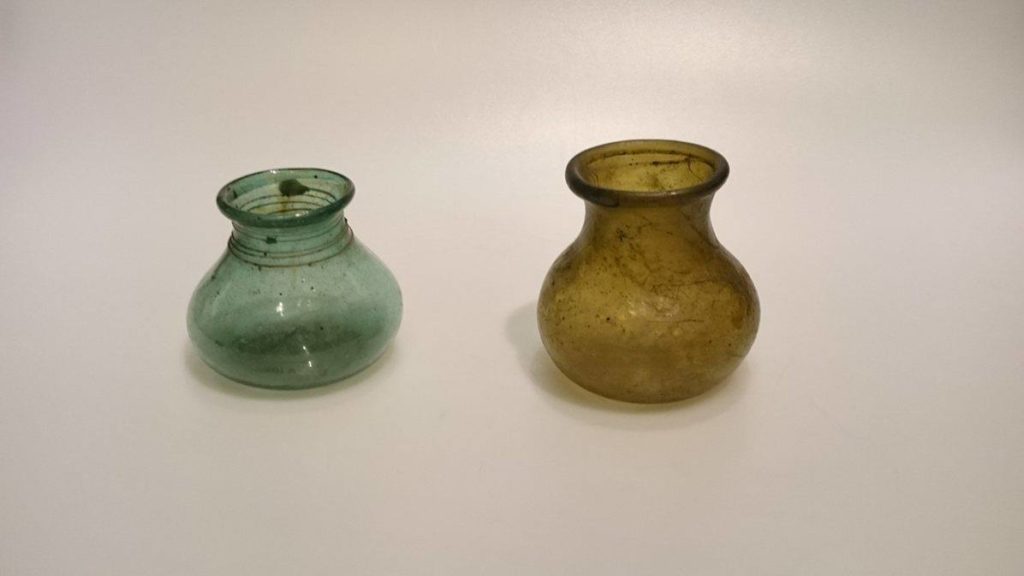

Two Glass Beakers
5th – 8th Century AD
Glass
Two glass beakers.
Found in Faversham, Kent, UK.
Reference: CANCM:nn
Can be found: The Anglo-Saxon Kingdom of Kent

